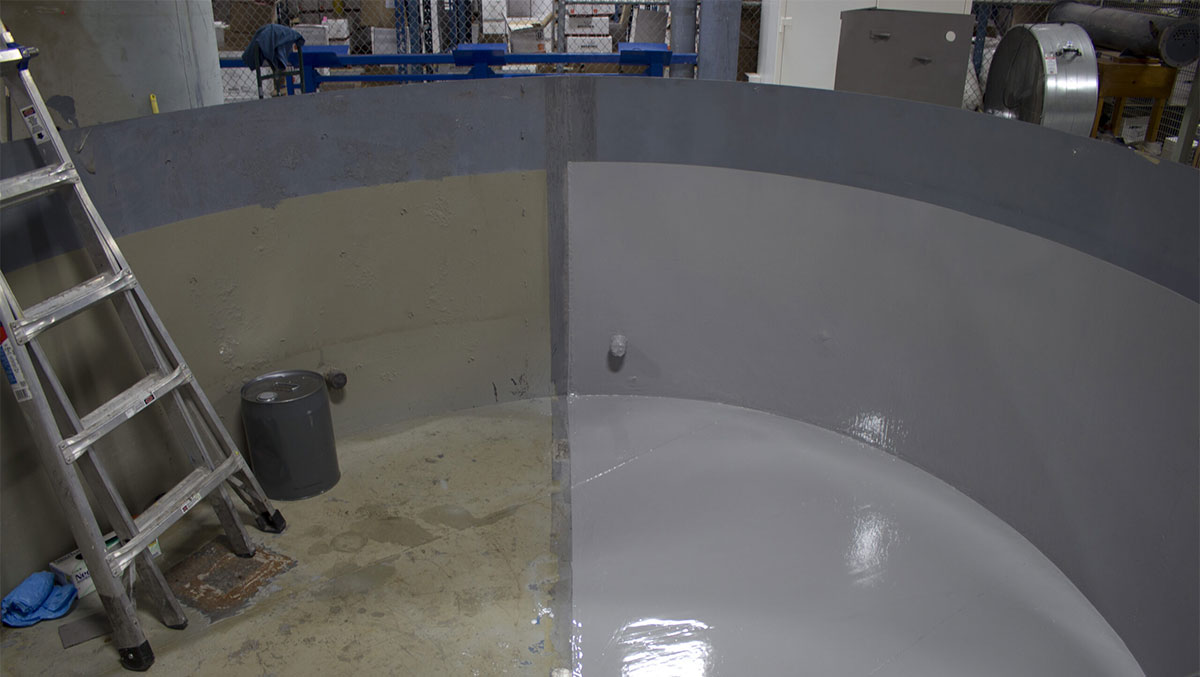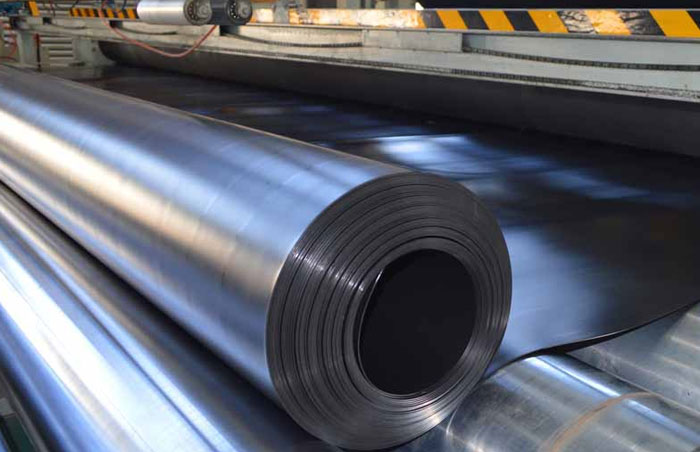
potable water tank lining is a critical component in ensuring the safety and quality of stored drinking water. These liners, made from materials like polyethylene or rubber, create impermeable barriers, preventing contamination and corrosion. A well-chosen and properly installed tank lining is essential for maintaining water integrity in various storage systems.
What are water tank liners?
Water tank liners are specialized materials or coatings designed to line the interior of water storage tanks. These liners serve several purposes, including preventing water leakage, protecting the tank from corrosion or damage, and ensuring the stored water remains clean and uncontaminated. Tank liners are commonly used in various types of water storage systems, such as agricultural tanks, industrial tanks, and potable water tanks.
The benefits of potable water tank lining
Potable water tank lining provides several important benefits for water storage systems used to contain water intended for human consumption. Here are some key advantages:
- Prevention of Contamination: Potable water tank liners act as a barrier, preventing direct contact between the stored water and the tank material. This helps to avoid potential contaminants from leaching into the water, ensuring that the water remains safe and clean for consumption.
- Corrosion Protection: Tank liners protect the interior of the water storage tank from corrosion, which can be caused by the interaction between the tank material and the water. Corrosion can compromise the structural integrity of the tank and introduce harmful substances into the water.
- Extended Tank Life: By providing a protective layer, tank liners can extend the lifespan of the water storage tank. They help prevent deterioration and damage to the tank structure, reducing the frequency of repairs or replacements.
- Flexibility and Adaptability: Potable water tank liners are often made from flexible materials like rubber or plastic, allowing them to conform to the shape of the tank. This adaptability ensures a snug fit, minimizing the risk of leaks or breaches in the lining.
- Easy Installation and Maintenance: Installing tank liners is generally a straightforward process, and it can be done without the need for extensive tank modifications. Routine maintenance of tank liners is also relatively simple compared to repairing or replacing the entire tank.
- Compliance with Regulations: The use of potable water tank liners helps water storage systems comply with regulations and standards set for drinking water quality. These liners are designed and manufactured to meet specific safety and quality standards, providing assurance that the stored water is fit for consumption.
- Reduced Microbial Growth: Some tank liners are designed to resist the growth of microorganisms, such as bacteria and algae, within the water. This feature helps maintain water quality by reducing the risk of biological contamination.
- Temperature Stability: Potable water tank liners can provide a degree of insulation, helping to maintain stable water temperatures. This is important in preventing the growth of harmful bacteria that may thrive in certain temperature ranges.
- Versatility in Design: Tank liners can be customized to fit a variety of tank shapes and sizes, making them a versatile solution for different types of potable water storage systems, including tanks used in municipalities, industries, and residential settings.
What are the different types of water tank liners?
There are several types of water tank liners, and the choice of liner depends on factors such as the type of tank, the intended use of the stored water, environmental conditions, and budget considerations. Here are some common types of water tank liners:
- Polyethylene (PE) Liners:
- Material: Polyethylene liners are made of a durable plastic material known as polyethylene.
- Applications: They are commonly used in agricultural tanks, industrial tanks, and pond liners.
- Advantages: PE liners are flexible, resistant to UV radiation, and provide good chemical resistance.
- Polypropylene (PP) Liners:
- Material: Polypropylene liners are made from a type of plastic called polypropylene.
- Applications: Used in various water storage applications where chemical resistance is important.
- Advantages: PP liners offer good chemical resistance and are suitable for applications with potentially aggressive substances.
- Materials: Rubber liners can be made from various types of rubber, such as EPDM (ethylene propylene diene monomer) or Butyl rubber.
- Applications: Commonly used for potable water storage, as rubber is often resistant to microbial growth.
- Advantages: Rubber liners are flexible, resistant to UV radiation, and offer good chemical resistance.
- Material: PVC liners are made from polyvinyl chloride, a type of plastic.
- Applications: Used in various water storage applications, including industrial tanks.
- Advantages: PVC liners are resistant to chemicals and UV radiation, making them suitable for outdoor use.
- Material: HDPE liners are made from high-density polyethylene, a type of plastic.
- Applications: Commonly used in landfill liners, pond liners, and industrial tank applications.
- Advantages: HDPE liners offer excellent chemical resistance and are durable with high tensile strength.
- Material: LLDPE liners are made from linear low-density polyethylene.
- Applications: Used in applications where flexibility and resistance to punctures are essential.
- Advantages: LLDPE liners are flexible, tough, and have good resistance to punctures.
- Material: XR-5 liners are a type of reinforced polyethylene with added strength.
- Applications: Used in demanding applications where increased puncture resistance and durability are required, such as in industrial tanks or hazardous waste containment.
- Material: FRP liners are made from a composite material consisting of fiberglass and a plastic resin.
- Applications: Suitable for various water storage applications, including corrosive environments.
- Advantages: FRP liners provide high corrosion resistance and structural strength.
- Rubber Liners (EPDM, Butyl, etc.)
- PVC (Polyvinyl Chloride) Liners
- HDPE (High-Density Polyethylene) Liners
- LLDPE (Linear Low-Density Polyethylene) Liners
- XR-5 (Reinforced Polyethylene)
- Fiberglass Reinforced Plastic (FRP) Liners
What are geomembrane liners?
Geomembrane liners are synthetic materials used as impermeable barriers in various civil engineering, environmental, and geotechnical applications. These liners are designed to prevent the passage of fluids or gases through them and are often used to contain or control the movement of liquids in a wide range of settings. Geomembranes are commonly employed in applications such as containment of liquids, waste management, environmental protection, and water conservation. One specific type of geomembrane liner is often used in water storage and containment applications.
The usage of geomembrane liners for potable water
Geomembrane liners are commonly used in the construction and maintenance of potable water storage and containment systems. Their impermeable nature and other advantageous properties make them suitable for various applications in the field of water management. Here are several ways in which geomembrane liners are utilized for potable water:
- Reservoirs and Tanks: Geomembrane liners are frequently employed to line the bottoms and sides of water reservoirs and tanks used for storing potable water. This lining helps prevent seepage and contamination of the stored water, ensuring its quality.
- Pond Liners: In cases where natural ponds or artificial ponds are used for potable water storage, geomembrane liners can be installed to create a reliable barrier. This is particularly important for preventing groundwater contamination and improving water retention.
- Aquifer Storage and Recovery (ASR) Systems: ASR systems involve storing treated potable water underground during times of surplus for later recovery. Geomembrane liners are used in the construction of these storage facilities to prevent the mixing of stored water with surrounding groundwater and to maintain water quality.
- Groundwater Recharge Basins: Geomembrane liners are used in groundwater recharge basins to prevent the infiltration of contaminants into the groundwater during the process of recharging aquifers with treated potable water.
- Lagoon Liners: In some cases, lagoons are used for temporary storage of potable water. Geomembrane liners are employed to line these lagoons, preventing water seepage and maintaining the quality of the stored water.
- Temporary Storage Facilities: Geomembrane liners are also used in the construction of temporary storage facilities for potable water. These facilities are often set up during emergencies or construction projects to ensure a safe and accessible water supply.
- Stormwater Harvesting Systems: Geomembrane liners are utilized in stormwater harvesting systems, where rainwater is collected and stored for potable use. The liners prevent contamination and ensure the quality of the harvested water.
- Piping and Conduits: Geomembrane liners can be used as liners for water conveyance structures, such as pipes and conduits, to prevent water loss through seepage and maintain water quality during transport.
What material cannot be used in potable water applications?
Materials that cannot be used in potable water applications are those that pose a risk of contaminating the water or compromising its safety for human consumption. Regulatory agencies often set standards and guidelines for materials that come into contact with drinking water to ensure that they do not introduce harmful substances. Some materials are inherently unsuitable for potable water applications due to their composition or potential for leaching harmful chemicals. Here are some materials that are generally not recommended for use in potable water applications:
- Lead: Lead is a toxic metal that can leach into water, especially in the presence of corrosive conditions. The use of lead in pipes, fittings, or any materials that come into contact with potable water is strictly regulated or prohibited due to the serious health risks associated with lead exposure.
- Galvanized Steel: Galvanized steel pipes and fittings are coated with a layer of zinc, and over time, corrosion can occur, releasing zinc into the water. High levels of zinc in drinking water can have adverse health effects, and thus, galvanized steel is not recommended for potable water systems.
- Copper Alloys with High Lead Content: Certain copper alloys, such as brass containing a high percentage of lead, can pose a risk of lead leaching. For potable water applications, it is essential to use lead-free brass or copper alloys that comply with relevant standards.
- Polyvinyl Chloride (PVC) with Plasticizers: PVC pipes that contain certain plasticizers or additives may leach into water, and the potential health effects of these substances are a concern. Potable water systems often require PVC pipes that meet specific standards for drinking water applications.
- Chlorinated Polyvinyl Chloride (CPVC) with Adhesives: CPVC pipes are suitable for potable water, but the adhesives used during installation can sometimes introduce undesirable substances into the water. It is important to use adhesives that are specifically approved for potable water applications.
- Certain Rubber Materials: Some rubber materials may contain compounds or additives that can leach into water and affect its quality. Rubber materials used in potable water applications should comply with relevant standards to ensure safety.
- Certain Plastics without Drinking Water Certification: Not all plastics are suitable for contact with potable water. Plastics used in water pipes, liners, or other components must meet specific drinking water standards to ensure they do not release harmful substances.
Conclusion
In conclusion, potable water tank lining plays a vital role in safeguarding water quality, preventing contamination, and ensuring the integrity of storage systems. The use of suitable liners, such as polyethylene, polypropylene, rubber, or PVC, provides impermeability, corrosion resistance, and compliance with regulatory standards. Proper selection, installation, and maintenance of tank liners are essential for sustaining clean and safe drinking water supplies.






